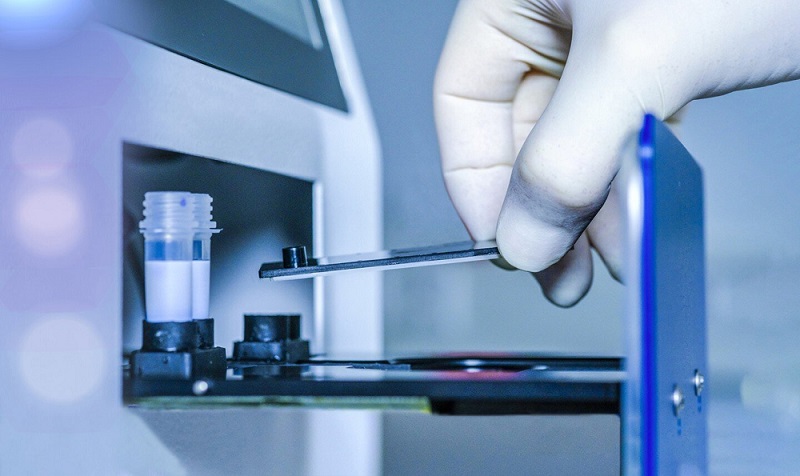Citing increased resistance to antibiotics on the rise globally, researchers from Fraunhofer Institute for Physical Measurement Techniques (Fraunhofer IPM), working alongside those from the Ludwig Maximilian University of Munich, have developed a process for rapidly detecting multidrug-resistant pathogens. The method is sensitive enough to be able to use a single molecule of DNA for pathogen detection.
Finding the most effective antibiotic often requires information about the bacteria’s genome, which is not typically available at medical practices. Lab testing is typically required, which adds time and complexity to the search. The method developed by the researchers accelerates the process, using a microfluidic chip to detect and analyze single molecules. The focus of the SiBoF (signal boosters for fluorescence assays in molecular diagnostics) project lies on an easy-to-use point-of-care detection method. The researchers anticipate the platform being used as part of point-of-care diagnostics in hospital wards or in medical practices as an alternative to the established polymerase chain reaction analyses.

A team of researchers in Germany has developed a process for rapidly detecting multidrug-resistant pathogens. The process uses a compact device that performs all stages of the reaction automatically and provides a result within one hour. Even a single DNA molecule is enough for detection. Courtesy of Fraunhofer IPM.
The portable, compact test platform is equipped with an automated fluidic system, in which all necessary reagents are stored. The injection-molded microfluidic chip is incorporated in a drawer in the test system, where it is supplied with the necessary reagents through the fluidic system before optical analysis takes place.
“We detect part of the pathogen’s DNA strand. Using our new process, even a single molecule of DNA that binds to a specific site on the microfluidic chip is sufficient to do this. Fluidic channels are integrated into the chip — the surfaces of which are primed with binding sites for specific pathogens," explained Benedikt Hauer, project manager and a research scientist at Fraunhofer IPM.
The point-of-care device features a miniaturized high-resolution fluorescence microscope. Specifically developed image analysis software identifies single molecules, which enables the captured target molecules to be counted to deliver a quantitative result. The fluorescence is stimulated using LEDs, which are affixed underneath the cartridge that contains the fluidic channels.
Usually, target DNA molecules are detected by means of specific fluorescence markers. The new method uses antennas with nanometer-size beads, which amplify the optical signals of these markers and eliminates reliance on chemical amplification via PCR.
“The optical antennas consist of nanometer-size metal particles that concentrate light in a tiny region and also help to emit the light — much as macroscopic antennas do with radio waves,” Hauer said. The metal particles are chemically bonded to the surface of the chip.
A structure of DNA molecules, which the researchers classified as DNA origami, holds both of the gold nanoparticles in place. Between the nanoparticles, the structure provides a binding site for the respective target molecule and a fluorescence marker. The patented design provides the basis for the novel assay technology.
“The particles, which are 100 nm in size, serve as antennas. Field enhancement, caused by plasmonic effects, takes place in the hot spot between the two gold particles. If a fluorescent dye is placed there, the detectable long-wave fluorescence radiation is enhanced multiple times. Using this method, a single molecule can be detected using a small, compact optical device,” Hauer said.
Low concentrations of pathogens can be detected, too, and the system delivers a result after one hour.
The device currently requires a module for sample preparation. However, it is available for demonstration, and a team will present the device between Nov. 15 and 19 at MEDICA 2021 in Düsseldorf, Germany.